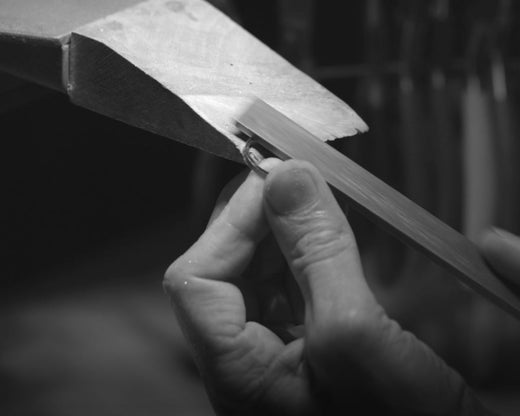Pearls have been and continue to be loved the world over. Their use in jewellery and fashion has meant that the love affair continues today.
Their versatility and lustre makes them so appealing and placing them in necklaces, pendants earrings and bracelets is the perfect way to enjoy their beauty.
However, there are all sorts of shapes, sizes and colours of pearls available and it can be hard to determine what is what.
What are Cultured Pearls?
The fact of the matter is this: almost all pearls sold today are cultured pearls, including freshwater pearls. In other words, there is no real difference when comparing cultured freshwater pearls vs. freshwater pearls. The real differentiator is the environment in which they are made, either freshwater or saltwater. Here's how they differ.
- Saltwater Pearls - Saltwater pearls, including Japanese Akoya pearls, Tahitian pearls and South Sea pearls, are created in saltwater environments. Akoya are the roundest and most lustrous pearls in the world. These saltwater pearls come from oysters inhabiting the oceans of the world.
- Freshwater Pearls - Freshwater pearls, on the other hand, are the product of mussels that inhabit freshwater lakes and rivers. Technically, if colored freshwater pearls were the largest, roundest and most lustrous pearls in the world, they could be worth as much as saltwater. Freshwater pearls can be round or irregular in their shapes and exhibit unusual colors. White Freshwater and Akoya Pearls are routinely bleached in order to produce a white pearl. Freshwater pearl of the grey, gold, black, pistachio, mocha, dark cream, blue and peacock are color enhanced with a dye.
FRESH WATER
The fresh water pearls, have the advantage of being better value for money while still offering great quality. Their shape is not always round, and their tones can vary from white, to pink, to light purple and other pastel colours. The dimensions of the most common fresh water pearls goes from 2 to 5 mm and can reach up to 14 -15 mm.
AKOYA
The “Akoya” pearl, cultivated in sea water, today represents a reference point for cultivated pearls. From their perfectly round shape, they are distinguished from other cultivated pearls because they present themselves with a bright, neutral and sweet color, with gray, pink, silver and cream or champagne and sometimes green highlights.
The Akoya pearls are the most famous among cultivated pearls and are ideal for composing necklaces and other jewels that are made with pearls. The dimensions vary from a minimum of 7 mm and can reach up to 10 mm, although 10mm tend to be rare.
SOUTH SEA
The white or golden pearls origins are from the Australian coasts. They are appreciated for their large size capable of reaching 22 mm. The southern sea pearls are known for their nacre’s shine, their deep gleam is satin, not common among other types of pearls. These pearls are very rare and much sought after and their value is tied directly to the quality of their surface. These pearls are extremely rare and very hard to find on the market.
TAHITI
These pearls are harvested in the French Polynesian seas, their natural and mystical multi coloured glow is the secret of their beauty. The use of the tahitian pearls gives each creation charm and elegance. The largest and darkest pearls of this variety belong to the subspecies of the cumingi, found in the tahitian surroundings. Dimensions vary from a minimum of 8 mm to a maximum of 16-17 mm.





